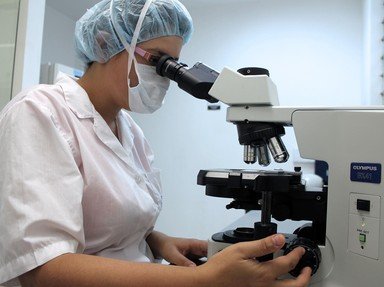Quiz Answer Key and Fun Facts
1. Unlike some other biological molecules, you are soluble. More specifically, you are water soluble, meaning that you can interact with water molecules via hydrophilic groups at your surface. Which other term is used to describe molecules which interact with hydrophobic solvents?
2. Your structure is carefully controlled by the chemical character of the units of which you are composed. Which weak and transient, yet widespread chemical interactions, also known as London dispersion forces, are involved in keeping many biological structures together?
3. You are not only found in animals, but in plants, fungi and prokaryotes (e.g. bacteria). One example of the type of molecule you are, called RuBisCO, is found in plants and is one of the most abundant molecules in the planet. Which process, associated with photosynthesis, is this molecule involved with?
4. You may also be involved with other important processes, such as the conversion of glucose into pyruvate - glycolysis. Where, specifically, does glycolysis occur in the human body?
5. As well as in photosynthesis and glycolysis, you may be found in the nucleus of a cell, where DNA replication and mRNA synthesis occur. What is the fate of mRNA after it is synthesised?
6. Although you are commonly found in humans, bacteria are needed to perform some functions which you cannot carry out. True or false - the human body is made up of almost as many bacterial cells as our own cells.
7. You are not only useful for processes in the human body, but you are now used in many industrial processes, and even in laundry detergents. For these uses, specific types of organisms are of interest. What general name is given to organisms which live in very cold or very hot conditions?
8. There have been many man-made products which carry out the same functions which you are capable of performing, but none have even come close to doing it with the same efficiency. However, a huge step was taken in 2010 when it was claimed that the first synthetic life-form had been created in a U.S laboratory. What quirky name was given to this organism?
9. Unfortunately, many examples of the type of molecule which you are are rather unimaginatively named. Which molecule is a protein which is involved with proteolysis, and is similarly unimaginatively named for its widespread presence in the cell?
10. Having gathered together the clues provided in the previous 9 questions, can you identify the type of biological molecule you are?
Source: Author
doublemm
This quiz was reviewed by FunTrivia editor
gtho4 before going online.
Any errors found in FunTrivia content are routinely corrected through our feedback system.

